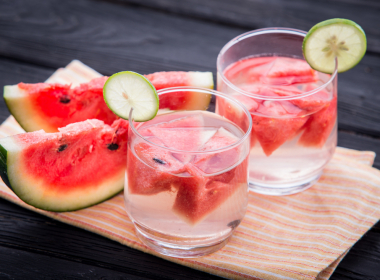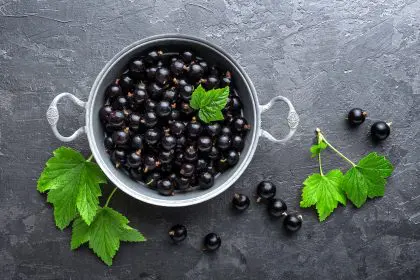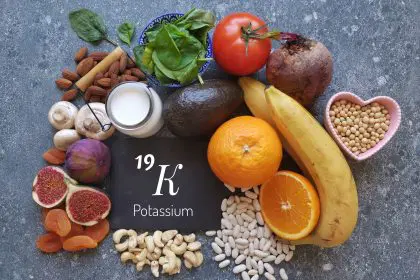This practical approach to nutrition emphasizes minimally processed options that deliver maximum benefits
What clean eating actually means
Clean eating centers around choosing foods in their most natural state with minimal processing and additives. Rather than following a rigid diet with strict rules, this approach emphasizes quality food choices that provide maximum nutritional value. The core philosophy encourages selecting foods that undergo minimal alteration between harvest and plate.
This eating style prioritizes whole foods like fresh produce, quality proteins, whole grains, and natural fats while reducing reliance on heavily processed alternatives. Unlike fad diets that often eliminate entire food groups, clean eating focuses on nutritional quality rather than restriction, making it sustainable for everyday life.
The concept sometimes gets misrepresented as an all-or-nothing approach, leading some people toward overly restrictive eating patterns. However, authentic clean eating allows flexibility and recognizes that occasional treats fit within an overall healthy pattern.
The foundation of clean eating
Building a clean eating plan begins with understanding which foods form its foundation. These staples deliver essential nutrients while avoiding unnecessary additives:
Fresh produce serves as the cornerstone, providing vital vitamins, minerals, fiber, and antioxidants. Aim for a colorful variety of seasonal fruits and vegetables, with an emphasis on leafy greens.
Quality proteins support muscle maintenance and provide satiety. Options include wild-caught fish, grass-fed meats, pasture-raised poultry, eggs from free-range chickens, and plant proteins like lentils and beans.
Whole grains deliver complex carbohydrates and fiber that regulate energy levels and support digestive health. Focus on unrefined options like brown rice, quinoa, farro, oats, and whole wheat.
Healthy fats from sources such as avocados, olive oil, nuts, seeds, and fatty fish provide essential fatty acids that support brain health and reduce inflammation.
Minimally processed dairy or plant alternatives without added sugars or artificial ingredients complete the foundation. Look for plain yogurt, kefir, and unsweetened milk alternatives.
These food categories contain numerous options, allowing for diverse meals that prevent dietary boredom while maintaining nutritional quality.
Foods to minimize in your diet
While clean eating emphasizes foods to include rather than strict exclusions, certain items naturally appear less frequently in this approach:
Highly processed foods with lengthy ingredient lists containing unfamiliar additives generally don’t align with clean eating principles. These often contain excessive sodium, refined sugars, unhealthy fats, and artificial preservatives.
Refined sugars appear under many names on ingredient lists and add calories without nutritional value. Natural sweeteners like honey or maple syrup, while still sugars, contain trace nutrients absent in refined alternatives.
Artificial additives including certain colors, flavors, sweeteners, and preservatives raise concerns for some health-conscious consumers trying to reduce chemical consumption.
Highly refined grains have had their fiber and many nutrients removed during processing. These digest quickly, potentially causing blood sugar fluctuations and reduced satiety.
This doesn’t mean these foods must be eliminated entirely—clean eating allows room for flexibility. The focus remains on proportions, with minimally processed foods forming the majority of your dietary intake.
Practical steps toward cleaner eating
Transitioning to cleaner eating works best as a gradual process rather than an overnight transformation. These practical strategies help make sustainable changes:
Start with produce by adding an extra serving of vegetables or fruit to each meal. This simple change increases nutrient intake while naturally crowding out less nutritious options.
Upgrade pantry staples gradually as items run out. Replace white rice with brown, refined flour with whole wheat, and sugary breakfast cereals with oats or minimally sweetened whole grain alternatives.
Read ingredient lists rather than focusing solely on nutrition facts. Fewer ingredients generally indicates less processing. Recognize that ingredients appear in order of quantity, with the first few making up the bulk of the product.
Cook more meals at home where you control the ingredients and preparation methods. Batch cooking on weekends provides clean options during busy weekdays when convenience often dictates food choices.
Rethink beverages by replacing sugary drinks with water, unsweetened tea, or fruit-infused water. This single change can significantly reduce added sugar consumption.
Plan ahead for situations that challenge clean eating. Pack nutritious snacks for travel, review restaurant menus before dining out, and prepare extra portions for busy days.
These steps build momentum toward cleaner eating without overwhelming changes that might prove unsustainable.
Navigating clean eating challenges
Even with the best intentions, obstacles to clean eating inevitably arise. Anticipating these challenges helps develop effective strategies:
Social situations often center around food that doesn’t align with clean eating goals. Consider eating something nutritious before events, bringing a clean dish to share, or simply enjoying special occasions without guilt.
Conflicting information about what constitutes “clean” can create confusion. Develop a personal definition based on your health goals rather than rigid rules promoted by various sources.
Grocery budgets sometimes limit access to certain clean options like organic produce or grass-fed meats. Prioritize spending on the “dirty dozen” most pesticide-laden produce while choosing conventional for the “clean fifteen” with lower residues.
Time constraints make convenience foods tempting. Combat this with batch cooking, simple meal formulas, and keeping clean convenience foods on hand like pre-cut vegetables or canned beans without additives.
Travel disruptions to normal eating patterns can be managed by researching restaurant options in advance, packing portable clean snacks, and focusing on the cleanest available options when choices are limited.
Approaching these challenges with flexibility rather than perfectionism supports long-term success with clean eating principles.
The health benefits of eating clean
Research consistently shows that diets emphasizing whole, minimally processed foods deliver numerous health advantages:
Stable energy levels result from complex carbohydrates and protein combinations that prevent the blood sugar spikes and crashes associated with highly processed foods. This translates to better concentration and reduced fatigue throughout the day.
Weight management becomes more intuitive when eating nutrient-dense foods that promote satiety with fewer calories. Clean eating naturally reduces consumption of the hyperpalatable combinations of salt, sugar, and fat that drive overconsumption.
Improved digestion often follows increased fiber intake from whole grains, vegetables, fruits, and legumes. This supports gut health and regular elimination while feeding beneficial gut bacteria.
Reduced inflammation may result from higher antioxidant consumption and better fatty acid balance found in whole foods. This matters because chronic inflammation underlies many health conditions.
Better skin appearance frequently accompanies clean eating due to increased hydration, essential fatty acids, and antioxidants that support skin cell regeneration and protection.
Enhanced immune function benefits from adequate micronutrient intake that supports various immune processes. Clean eating provides these nutrients from whole food sources where they exist alongside beneficial phytochemicals.
These benefits typically emerge gradually rather than overnight, reinforcing the value of consistent rather than perfect adherence to clean eating principles.
Finding your personal balance
The most sustainable approach to clean eating acknowledges individual differences in nutritional needs, preferences, and circumstances. Your personal version should consider:
Health conditions that may require specific nutritional approaches or modifications to typical clean eating recommendations. Work with healthcare providers to adapt guidelines appropriately.
Cultural food traditions that hold personal significance. These can be honored while still applying clean eating principles through ingredient upgrades and preparation modifications.
Environmental impact concerns lead some to emphasize plant foods and locally grown options within their clean eating framework. This personalized priority aligns ethical and nutritional values.
Realistic sustainability remains essential for long-term success. The cleanest theoretical diet serves no purpose if it creates stress or can’t be maintained within your lifestyle.
Enjoyment and satisfaction matter tremendously for any sustainable eating pattern. Clean eating should enhance your relationship with food rather than creating anxiety or rigidity around eating.
Finding this balance takes experimentation and self-awareness, but ultimately creates an approach that supports both physical health and quality of life.
Beyond the plate: A holistic perspective
True clean eating extends beyond food choices to encompass your entire relationship with meals and nourishment:
Mindful eating practices complement clean food choices by encouraging awareness of hunger, fullness, and satisfaction cues. This helps prevent both undereating and overeating.
Meal environments affect digestion and satisfaction. Creating calm, pleasant eating settings enhances the benefits of nutritious foods.
Food appreciation develops through understanding where food comes from and the effort required to produce it. This naturally encourages more conscientious choices.
Cooking skills enable greater control over ingredients and preparation methods. Even basic culinary abilities expand clean eating possibilities dramatically.
Community connections around food—whether family meals or shared cooking—enhance the social and emotional benefits of eating well.
This broader perspective transforms clean eating from merely a nutritional approach into a more meaningful relationship with food that supports overall wellbeing.
Clean eating offers a flexible framework for making food choices that support health while avoiding excessive restriction. By focusing on whole, minimally processed foods most of the time while allowing room for special occasions and personal preferences, this approach provides sustainable nutritional benefits without the pitfalls of diet culture.
















